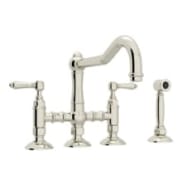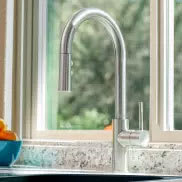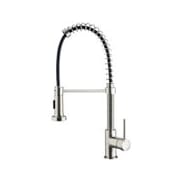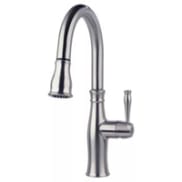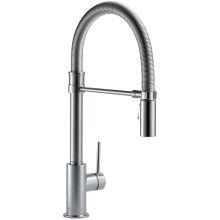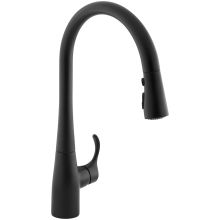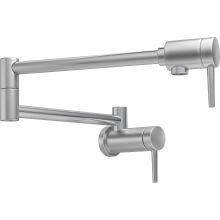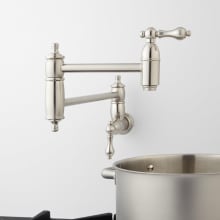9 Types of Faucets for Your Kitchen
Design isn’t the only consideration when selecting a new kitchen faucet, so do your homework to choose the best fit.
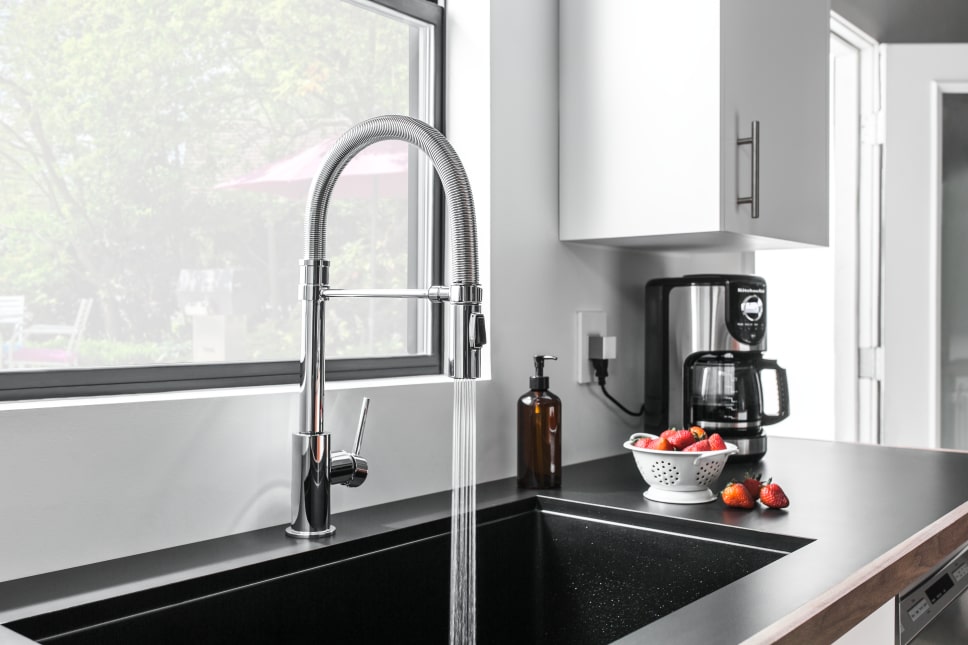
Kitchen faucets are without a doubt the champion of the most popular room in a home. Faucets reliably give us water, in the temperature and flow pressure we demand, with just a simple adjustment of the handle. Because kitchen faucets do so much for the family, it is only fitting that homeowners put a lot of consideration into selecting the right one. Although a stylish design is important, the biggest factor should be whether or not the faucet will do the work necessary for your home.
Before deciding which fixture is the best fit for the kitchen, know your options, weigh them out. Be certain you choose the right faucet, because the right one will be working for your kitchen for years. So, without further ado, here are the different types of kitchen faucets explained.
Single Handle
A single-hole faucet, also called a single handle faucet, is more about the installation functionality than anything else. It is exactly as the name suggests: only one hole in the sink or countertop is needed to accommodate the entire fixture. The faucet consists simply of an arching spout, where the water comes out, and a control handle. However, don’t be fooled by the simple concept. There are plenty of variations in design for a single-hole faucet that can add helpful features, such as a pull-down head, an aerator, or even water filtration.
Pullout
Pullout faucets are all about the spout. In this style, the head of the spout can be detached from the main stem and used freely to twist and bend and reach all corners of the sink, thanks to the attached hose. The hose can range up to two feet or more, allowing users to move the water source to the position where it is needed. If you’re used to a separate sprayer for attacking food stuck on dishes, you’ll appreciate the pullout style.

Two-handle
Two-handle faucets, such as bridge faucets, have separate handles for hot and cold water in addition to the spout. The water is mixed in the spout, but users have the ability to only use either the hot or cold water as desired. When filling up a water bottle, for example, only the cold water is necessary. Again, this style of faucet can accommodate additional features depending on design.
Wideset
A wideset faucet is almost exactly the same as the two-handle format except that each element – two handles, spout, or even a sprayer – is installed separately, requiring more holes in the countertop. There is a lot of versatility because you can add as many accoutrements as you’d like. Always wanted an in-sink soap dispenser? Now is your chance.

Pre-Rinse
Similar to a pullout faucet but more limited in its range, a pre-rinse faucet has a detachable head that moves directly down from the spout or anchored hose. Although the versatility of movement is usually significantly less than the pullout, there are advantages. Pre-rinse-style faucets tend to have a high arch, or gooseneck, spout to accommodate the downward extension of the head. In addition to allowing the extra functionality of allowing the sometimes awkward sizes of large pots, this leads to unique, eye-catching designs, with a number of different finishes. Also, users run less risk of making a large water mess because of the limited range of movement.
Side Sprayer
If the design of a detachable spout head is not the look you’re after, kitchen faucets with a side sprayer is a classic option that has been popular for years. The sidespray gives users the option to move water around, attack tough food particles up close, and keep the side sprayer free of grime using a faucet separate from the spout itself. It can be part of a single-hole or multi-hole configuration, depending on the style you want.
Basin Taps
If your kitchen relies on a more trendy retro-look, old-school basin taps are a great option. In this style, there is no center spout at all. There are two separate, small spouts that only dispense hot or cold water. In the past, this was called “unmixed” water. Users can only get one temperature at a time; if they want warm water, they have to mix it in the sink basin.
Dual-handle, single-hole
Some faucets have temperature control handles that are attached directly to the spout. The upside is that installation only requires a single hole, and the designs can be ultra-cool and modern. The downside is that the working parts for two water sources are entirely self-contained in the small space of a single spout, so if something breaks, the whole fixture has to be replaced rather than just fixing the troublesome part.
Pot Fillers
Particularly popular for gourmet kitchens, pot filler faucets usually mount to the wall to allow an extremely high, fold-away spout to make room for large, deep pots to fit under them. Pasta- and soup-loving families might be particularly interested in this style, as a higher flow rate fills even a large pot quickly and easily. The spouts are usually thin and elegant, making them a strong design choice as well.

A Word About Faucet Mechanics
Another useful tip on selecting a faucet is knowing the terminology that will sometimes pop up when browsing the choices. It’s not all about the color and finish, or the look of the fixture. Consider also how it works, how does the water mix, because that will determine things like the flow rate, or the kinds of repairs or parts that may be needed over the long term. The operation of a faucet depends on the valve that controls it.
These are the four main types, including the first three “washerless” valves:
- Ball: The temperature- and flow-control handle pivots on a ball near the base of the spout.
- Disk: The water-control handle is part of the faucet, over a cylindrical body.
- Cartridge: When water flow is dictated by an up-down movement rather than by pushing the handle back to start flow (such as in the ball or disk configuration), the faucet is likely to operate using a cartridge setup.
- Compression: In older fixtures, users have to manipulate separate hot and cold handles that must be “screwed” to turn off the flow.
When it is time to select the best faucet for a kitchen repair or remodel, there can be a lot to consider when choosing a new fixture. Take the time to make the right choice at the start and you’ll have many years with a reliable and enjoyable design to add to the look of your entire kitchen.

